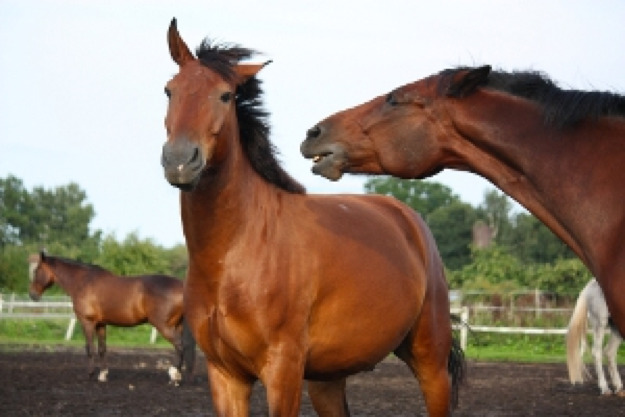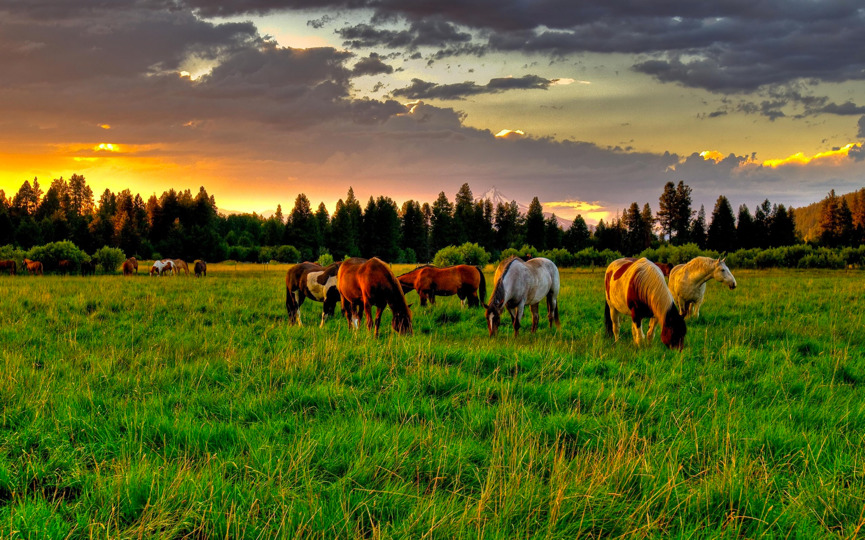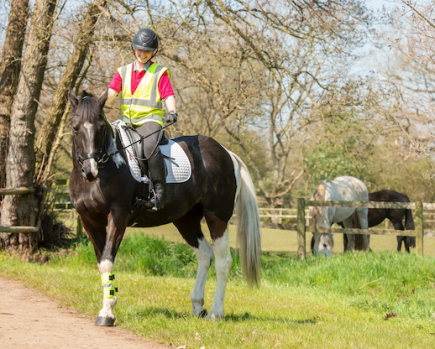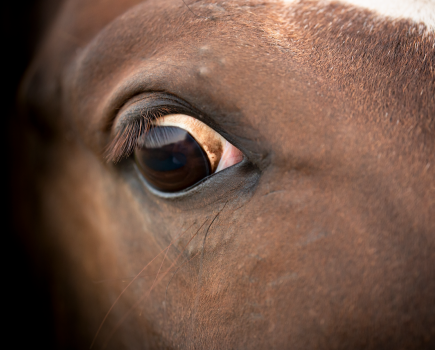Here to explain the science behind the art of equitation is Ilse. Here in her second blog, she explains what scientists know about how horses perceive us.
Horses are naturally very sociable animals.
Domestic horses, just like horses in the wild, tend to form a herd when allowed group turn out.
As most owners will know, there tends to be a definite hierarchy or ‘pecking order’, with one horse appearing to be firmly in charge, one horse firmly at the bottom and the others ranging in-between.
By having this ‘dominance hierarchy’, horses can settle arguments with the minimum amount of aggression, greatly reducing the chance of injury.
The dominant horse tends to dictate where the herd goes, whether that’s for the best grazing or to escape danger.
In fact, many of the tactics used by the herd leader to assert their dominance are also used by us to assert our dominance over our horses during training.
Therefore are we, in effect, attempting to become the herd leader when we train our horses? And is this how our horses see us?
How horses communicate
Horses communicate with each other in a number of ways.
They use visual messages (e.g. pinning their ears back), auditory messages (e.g. neighing), smell cues (e.g. smelling each other’s droppings) as well as their sense of touch (e.g. grooming one another).
They use all of these types of communication when forming the social bonds within a herd.
In stark contrast, we humans mostly communicate via language (auditory messages).
In other words, we are effectively using only a very small part of the horses “language” when we communicate with them.
How does that difference influence our interaction with our horses in terms of social bonds?
Have we got it wrong?
There has been a feeling for a long time that horses are naturally tuned to respond to our voices.
In fact, untrained horses have been shown to have no natural understanding of the meaning of the tone of our voice.
Without previous experience, they have no idea that a harsh, loud tone of voice means that a person is angry, or that they are trying to soothe the horse when using a quiet, calm tone.
What horses are very good at is learning from past experience.
They very quickly learn to associate an angry tone of voice with punishment and a quiet tone with reward.
Similarly, while horses can be directed by a human pointing in a certain direction, this can only happen after a period of training.

Horses communicate with one another in many different ways and are naturally tuned to the meaning of certain gestures. A rapidly approaching horse with its ears pinned back and teeth bared is clearly interpreted as an act of aggression.
In contrast, a horse instinctively knows to get out of the way when another horse rushes towards them with ears pinned back.
How horses see humans
In other words, it’s quite clear that our horses don’t consider us to be small, slightly misshapen horses and their behaviour towards us reflects this.
For example, if horses really did think of us as being part of the herd, then they would be far less likely to get so upset when they are separated from their friends in the field.
Similarly, if we really were the dominant horse, then our horses would willingly and reliably follow us away from the herd (who should then follow on).
In my experience, this is a rare occurrence without a very large food bribe!
On the flip side, a naughty horse refusing to do as he’s told, or pushing his trainer around is unlikely to be exhibiting these behaviours in order to assert his dominance.
So while we do assert dominance over our horses on a regular basis both on board and on the ground, as far as our horses are concerned, we’re not taking on the role of leader of the herd.
It’s important to remember that our relationships with our horses are, as far as the horse is concerned, very different from their relationships with other horses and we should bear this in mind both during training and handling.










